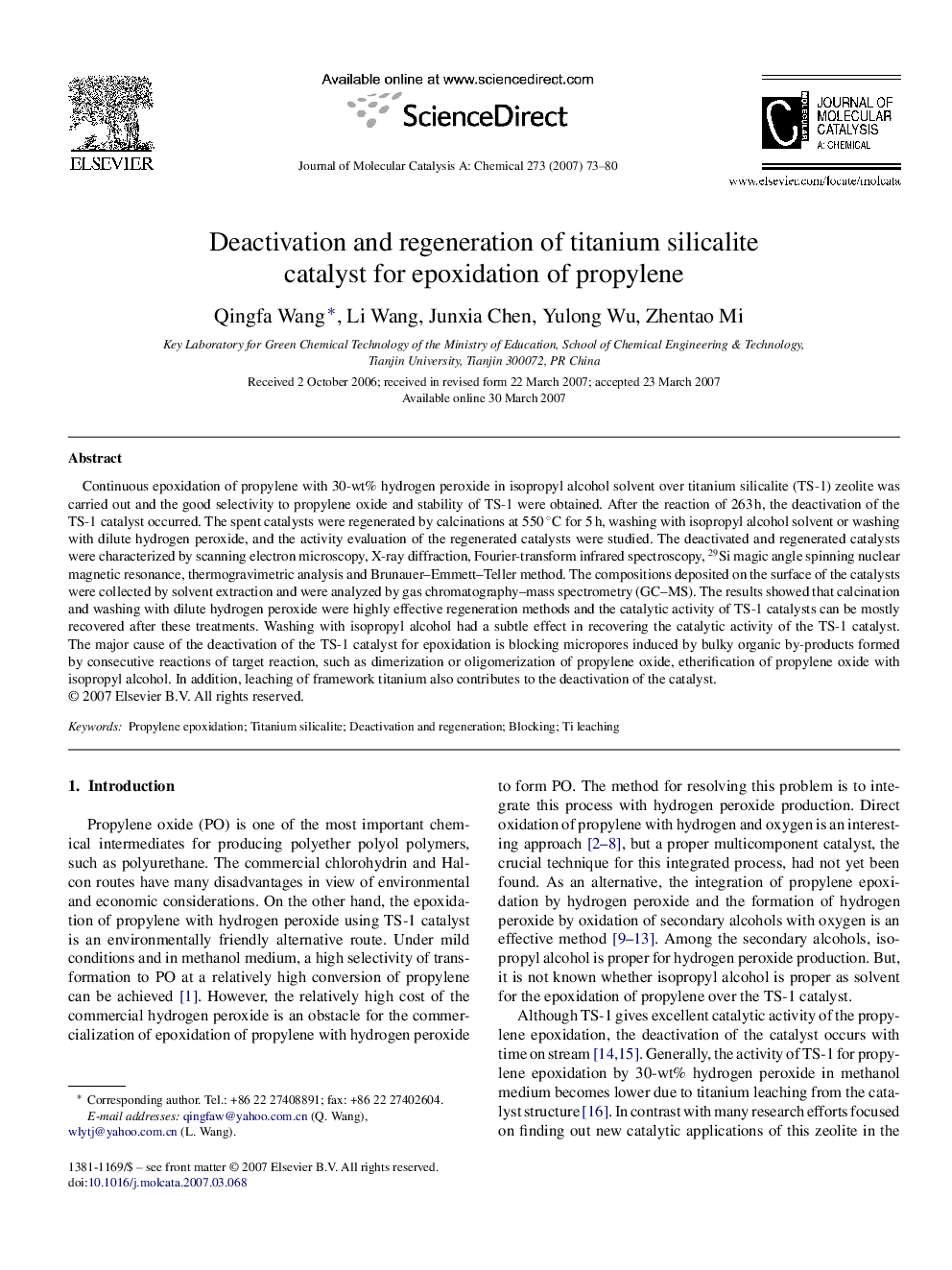| Article ID | Journal | Published Year | Pages | File Type |
|---|---|---|---|---|
| 67875 | Journal of Molecular Catalysis A: Chemical | 2007 | 8 Pages |
Continuous epoxidation of propylene with 30-wt% hydrogen peroxide in isopropyl alcohol solvent over titanium silicalite (TS-1) zeolite was carried out and the good selectivity to propylene oxide and stability of TS-1 were obtained. After the reaction of 263 h, the deactivation of the TS-1 catalyst occurred. The spent catalysts were regenerated by calcinations at 550 °C for 5 h, washing with isopropyl alcohol solvent or washing with dilute hydrogen peroxide, and the activity evaluation of the regenerated catalysts were studied. The deactivated and regenerated catalysts were characterized by scanning electron microscopy, X-ray diffraction, Fourier-transform infrared spectroscopy, 29Si magic angle spinning nuclear magnetic resonance, thermogravimetric analysis and Brunauer–Emmett–Teller method. The compositions deposited on the surface of the catalysts were collected by solvent extraction and were analyzed by gas chromatography–mass spectrometry (GC–MS). The results showed that calcination and washing with dilute hydrogen peroxide were highly effective regeneration methods and the catalytic activity of TS-1 catalysts can be mostly recovered after these treatments. Washing with isopropyl alcohol had a subtle effect in recovering the catalytic activity of the TS-1 catalyst. The major cause of the deactivation of the TS-1 catalyst for epoxidation is blocking micropores induced by bulky organic by-products formed by consecutive reactions of target reaction, such as dimerization or oligomerization of propylene oxide, etherification of propylene oxide with isopropyl alcohol. In addition, leaching of framework titanium also contributes to the deactivation of the catalyst.
Graphical abstractThe addition by-products and dimeric compounds or oligomers of propylene oxide blocked the channels and covered the active sites, which mainly contributes to deactivation of the TS-1 catalyst. In addition, Ti leaching also occurred in the continuous epoxidation of propylene. The regeneration by calcination completely burnt off the coke deposition and the catalytic activity can be fully recovered except for that caused by Ti leaching.Figure optionsDownload full-size imageDownload as PowerPoint slide
